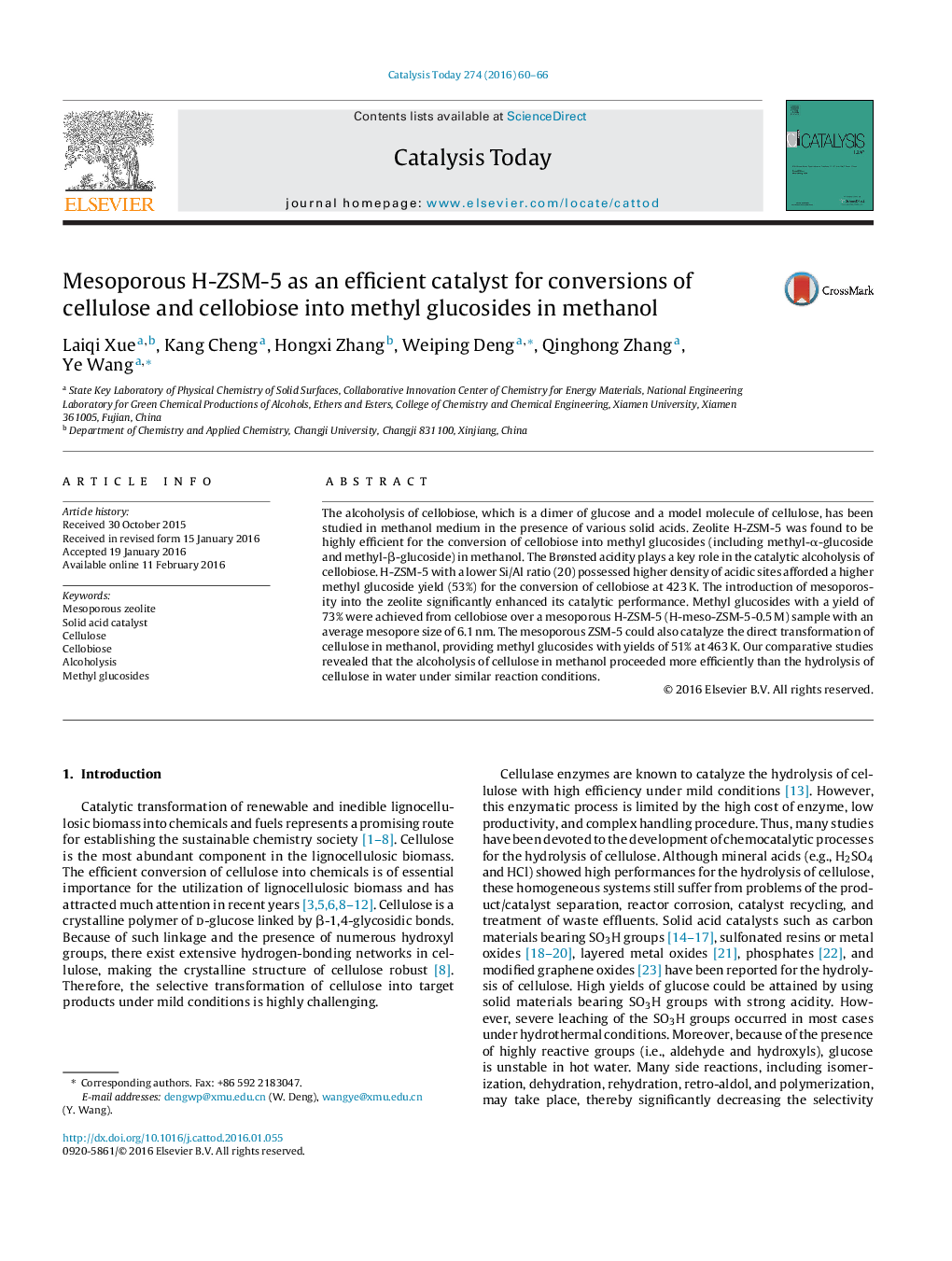| کد مقاله | کد نشریه | سال انتشار | مقاله انگلیسی | نسخه تمام متن |
|---|---|---|---|---|
| 53202 | 46953 | 2016 | 7 صفحه PDF | دانلود رایگان |
• Mesoporous H-ZSM-5 is efficient for alcoholysis of cellulose to methyl glucosides.
• Brønsted acidity and mesoporosity determine the catalytic performance.
• Alcoholysis proceeds more efficiently than hydrolysis over mesoporous H-ZSM-5.
The alcoholysis of cellobiose, which is a dimer of glucose and a model molecule of cellulose, has been studied in methanol medium in the presence of various solid acids. Zeolite H-ZSM-5 was found to be highly efficient for the conversion of cellobiose into methyl glucosides (including methyl-α-glucoside and methyl-β-glucoside) in methanol. The Brønsted acidity plays a key role in the catalytic alcoholysis of cellobiose. H-ZSM-5 with a lower Si/Al ratio (20) possessed higher density of acidic sites afforded a higher methyl glucoside yield (53%) for the conversion of cellobiose at 423 K. The introduction of mesoporosity into the zeolite significantly enhanced its catalytic performance. Methyl glucosides with a yield of 73% were achieved from cellobiose over a mesoporous H-ZSM-5 (H-meso-ZSM-5-0.5 M) sample with an average mesopore size of 6.1 nm. The mesoporous ZSM-5 could also catalyze the direct transformation of cellulose in methanol, providing methyl glucosides with yields of 51% at 463 K. Our comparative studies revealed that the alcoholysis of cellulose in methanol proceeded more efficiently than the hydrolysis of cellulose in water under similar reaction conditions.
Mesoporous H-ZSM-5 with a Si/Al ratio of ∼20 and mean mesopore size of ∼6 nm efficiently catalyzes the alcoholysis of cellulose and cellobiose into methyl glucosides in methanol.Figure optionsDownload high-quality image (415 K)Download as PowerPoint slide
Journal: Catalysis Today - Volume 274, 1 October 2016, Pages 60–66
